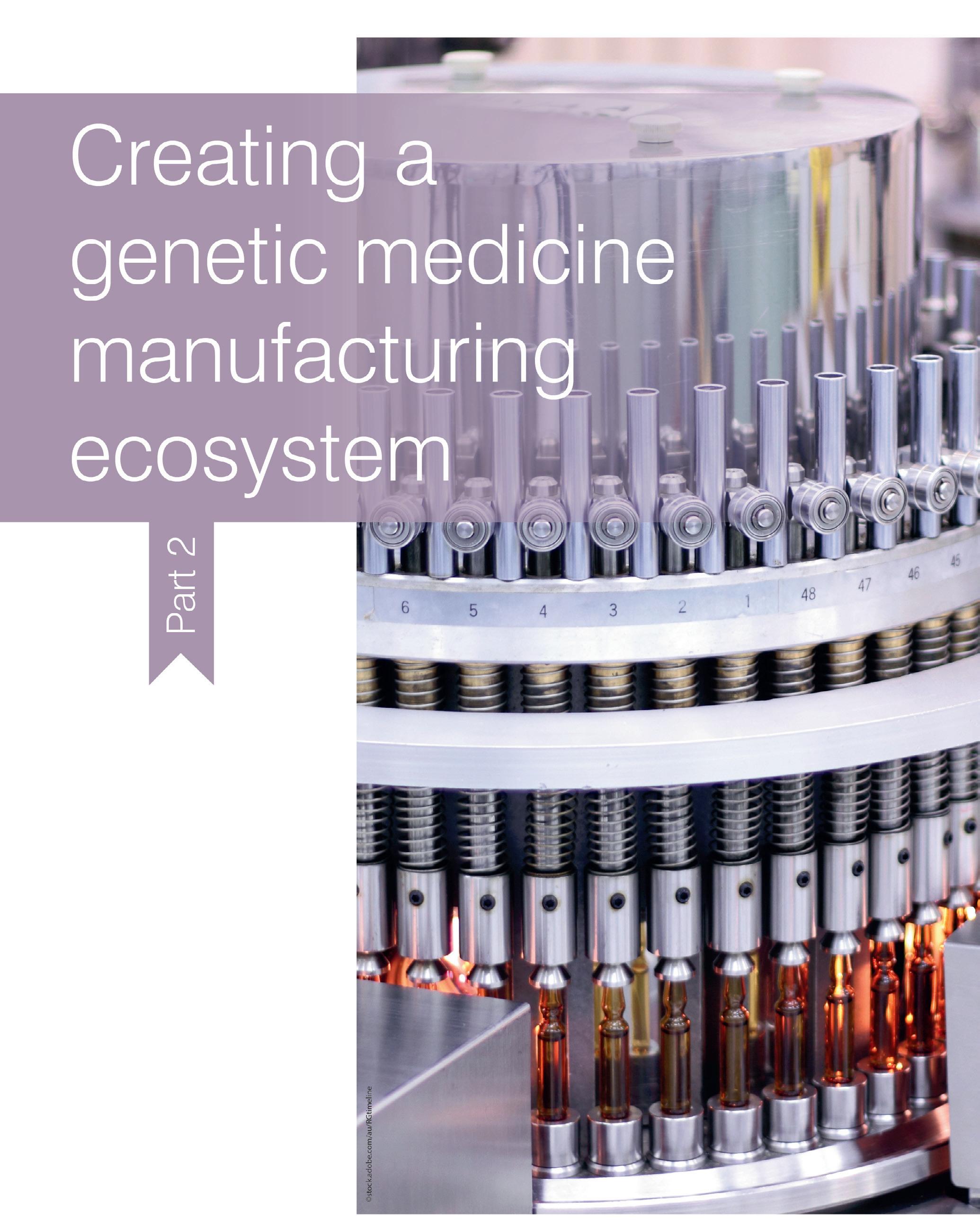
18 minute read
CREATING A
In the April/May 2021 issue of Lab+Life Scientist1, I wrote about the need to create a genetic medicine ecosystem. I am humbled to hear it has had some level of impact.
The landscape has shifted from a hopeless pipedream to firm steps and to the creation of such an ecosystem, from the unlikeliest places. There has been a maturation of groups fundamental to the success of such a concept and formalised structures in the design stage. State governments may be the key to the ecosystem dilemma given the apparent lack of action federally to date! So, let’s dive in and learn what’s been happening since then.
Whilst I was delivering a genetic medicine seminar on 21 April at the Doherty Institute, the Victorian Government weighed into the national
©stock.adobe.com/au/RGtimeline
void by investing a whopping $50 million to advance the production of a COVID-19 vaccine. This kicked the nation into overdrive, seemingly caught other governments by complete surprise and buoyed the Australian RNA Production Consortium (ARPC).
The masterplan of a complete ecosystem enjoyed some tinkering around the edges by Therapeutic Innovation Australia, involved in an RNA production facility at The University of Queensland. This is a much-needed initiative for one of the puzzle pieces.
The Australian Government has at last embarked on a plan with ‘Australia’s onshore mRNA manufacturing capability: approach to market’ led by the Department of Industry, Science, Energy and Resources. The Department said: “Building on the success of COVID-19 mRNA vaccines, the Australian Government recognises that mRNA technology is part of the next generation in advanced health care … On 21 May 2021, the government opened this approach to market. It enables manufacturers who can provide mRNA manufacturing capability in Australia to plan a partnership approach with the government to bring forward this capability.”2
On the face of it, this looks like a fabulous initiative but will require careful planning given the enormity of the project, requiring an end-toend, onshore, population-scale mRNA capability to be fully operational within a short time frame. Respondents were given only eight weeks to respond to the approach to market as it closed on 16 July. This is an onerous task for smaller biotech companies which may leave only big pharma capable of responding. I wait with interest to see if this will be the full ecosystem we are anticipating. Interestingly, the government may elect not to invest nor have they postulated the investment value. The research community is highly sceptical of this. Will the organisation granted access to this funding be a champion for the research community? Perhaps the grant should force local research collaboration, given this is where the most amazing discoveries arise from; ideally it should have researcher governance.
ANZ alliance and the Australian Academy of Science (AAS) The ARPC has advised governments on so many levels, it is nice to see they have collaborated with our friends in New Zealand. Now they are the ANZRPC. A little over a year ago, six motivated and highly driven scientists from across Australia came together to promote the opportunity to manufacture genetic medicines locally, now having the support of the Australian Academy of Science. They collaborated with the AAS for a roundtable event3 which resulted in a statement on our national RNA science and technology priorities:
“The agreed recommendations from the roundtable are to advance opportunities towards: • a national mission for the whole RNA science and technology pipeline in Australia, driven by strategic investment and prioritisation across funding schemes - the national mission should provide sustainable, long-term funding for projects from fundamental research to translation • a local mixed RNA manufacturing ecosystem, including pilot facilities to enable new
Australian products to be translated, production of pre-clinical trial components and GMP sovereign manufacturing capability to support clinical trials • the formalisation of cross-disciplinary coordination to: - develop a roadmap for a national RNA science and technology mission - holistically nurture the entire research to translation pipeline - connect the research community to each other and industry • the facilitation of commercialisation and establishment of a self-sustaining RNA biotech industry through new and existing mechanisms, including incentivising the capture of new intellectual property, the R&D tax incentive and proposed patent box initiative • schemes to build capacity in entrepreneurial and translation expertise, including facilitating greater mobility between research and industry”4 .
Looking at these recommendations through the lens of a future for STEM, young researchers, manufacturing and sovereign capacity, they are on target and a scream to the government NOT to lock up funding with a self-serving corporate entity without interest in engaging with basic research.
The pedigree of the participants is a formidable list of outstanding researchers. The observers to this event were fortunate to witness what will go down in history as one of those rare events of immense importance.
Monash makes a move Professor Colin Pouton was awarded $5 million from the Victorian Government to progress his COVID-19 vaccine to the clinic. It was exciting to see Prof Pouton explain his vaccine concept during the BioForum5 recently. This forum was made possible by the BioMelbourne Network with mRNA Victoria as collaborators for the event, plus sponsor the Victoria State Government Department of Jobs, Precincts and Regions, and I should acknowledge the speakers — the Hon Jaala Pulford, Prof Pouton and Dr Amanda Caples. This is no pipedream: the reality is they acquired a NanoAssemblr Blaze for phase 1 clinical trials at IDT Australia (Institute of Drug Technology Limited) — a publicly listed Australian cGMP pharmaceutical manufacturing company based in Melbourne. What a monumental step towards securing local manufacturing led by the researcher! The Victorian Government should be applauded for such an initiative.
Then UNSW arrives The UNSW RNA Institute will be a science, therapeutics and translational facility driving cross-disciplinary approaches to global challenges in RNA chemistry, biology and medicine. It will be established with a $25 million investment from UNSW as part of a collaborative RNA bioscience alliance between NSW universities. Another ARPC founder, Professor Pall Thordarson from UNSW Science, will lead the UNSW RNA Institute.
“An mRNA manufacturing capability would position Australia as a leader in the global research effort to combat emerging vaccineresistant viruses, such as new COVID-19 variants,” Prof Thordarson said.
“More importantly, this is not just about mRNA vaccines. They are only the tip of the iceberg in terms of a whole range of RNA therapeutics that are revolutionising medicine — a field that UNSW has great strengths in and includes novel cancer treatments and RNAbased treatments against the virus that causes COVID-19.”6
In partnership with NSW Health, UNSW will also lead the NSW RNA Production and Research Network. This network brings together four universities — The University of Sydney, the University of Technology Sydney, Macquarie University and The Australian National University — plus several medical institutes and hospital-based facilities with the UNSW RNA Institute, to enable an RNA community of practice in NSW/ACT.6 Delta rages — in a word… VACCINATE! As Australia comes to grips with a fresh COVID-19 outbreak of the Delta variant, NSW has stepped up and run hard to vaccinate — the way forward to some semblance of normality is clearly vaccination. Companies are scrambling to resolve their approach to manage this situation. Some are attempting to mandate vaccination; others are taking a more carrot than stick tactic where access will require certified two jabs. Such a passport scheme appears to be effective in encouraging ambivalent people to step up and expose their arm. It is a ‘vaxxed’ or is that a vexed issue — even the Fair Work Ombudsman has updated its guidelines stating that employers can “direct” employees to get vaccinated where it is “lawful and reasonable”.8 What does this mean and who judges this?
As with many things in life the key is education; this cannot be clearer than looking at the ATA Scientific example. We are boasting a high vaccination rate without any encouragement from management. The status will be 100% soon as the vaccination appointments come along. This prompts me to consider why we are finding 100% relatively easily as the national percentage of fully vaccinated is approximately 36% at the time of writing9; perhaps it is what we do.
ATA Scientific supplies instruments to the medical research industry; we are immersed in vaccine research, genetic medicine, COVID treatment research and so much more. We are proud to play our small part in Australia’s response. Not all our team were immune to the prevailing virus of social media rabbit holes, however, requiring a little Vaccine 101 and explanation of how mRNA works. We certainly are fortunate we can reference to peer-reviewed research, and many of these researchers are our direct customers and friends.
Much has been said about the current batch of mRNA vaccines, specifically developed too fast to trust. The idea that these vaccines came out of nowhere is a failure of scientific communication. They are based on decades of research across multiple fields. In a recent presentation on lipid nanoparticle RNA vaccines7, 2020 Nobel Laureate Dr Michael Houghton describes the journey of mRNA vaccine development eloquently.
And we wait I concluded my first genetic medicine ecosystem article calling for funding to back the ARPC vision. I borrowed a phrase from Professor Archa Fox: “The opportunity is there — we just have to be bold and grasp it with both hands.” Let’s grasp the opportunity the Victorian and NSW Governments have bestowed, look to the future and all the possibilities from this amazing journey so far and make Australia a global powerhouse of scientific research, democratising medicine!
References 1. https://issuu.com/westwick-farrowmedia/ docs/lab_and_life_scientist_apr_may_2021/6
Accessed 23 Aug 2021. 2. Department of Industry, Science, Energy and
Resources. Australian Government. Accessed 1 July 2021. https://www.industry.gov.au/ news/enabling-australias-onshore-mrnamanufacturing-capability-approach-to-market 3. https://www.science.org.au/news-and-events/ news-and-media-releases/can-australiaemerge-covid-19-pandemic-and-build-worldleading-rna-science-based-biotech-industry
Accessed 24 Aug 2021 4. Statement – National RNA science and technology priorities https://www.science. org.au/files/userfiles/support/documents/ statement-national-rna-science-andtechnology-priorities.pdf 5. https://biomelbourne.org/bioforum-futuredirection-for-mrna-technology-meetingrecording/ Accessed 24 Aug 2021 6. New UNSW institute to spearhead NSW government drive for RNA research: https:// newsroom.unsw.edu.au/news/sciencetech/new-unsw-institute-spearhead-nswgovernment-drive-rna-research Accessed 24 Aug 2021 7. RNA LNP Vaccines Overview - Dr. Michael
Houghton https://www.youtube.com/ watch?v=h3YeC04IxnI Accessed 24 Aug 2021 8. https://www.abc.net.au/news/2021-0822/covid-19-frequently-asked-questionscoronavirus-most-asked-2/100394856
Accessed 23 August 2021. 9. https://www.health.gov.au/sites/default/ files/documents/2021/08/covid-19-vaccinerollout-update-jurisdictional-breakdown22-august-2021.pdf Accessed 23 August 2021
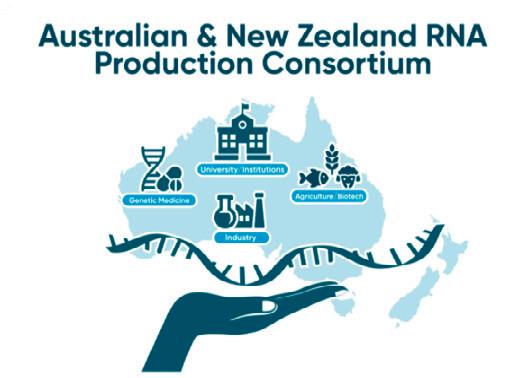
Save 10% on epMotion® 5073t or 5075t NGS Solution
NGS Made Easy
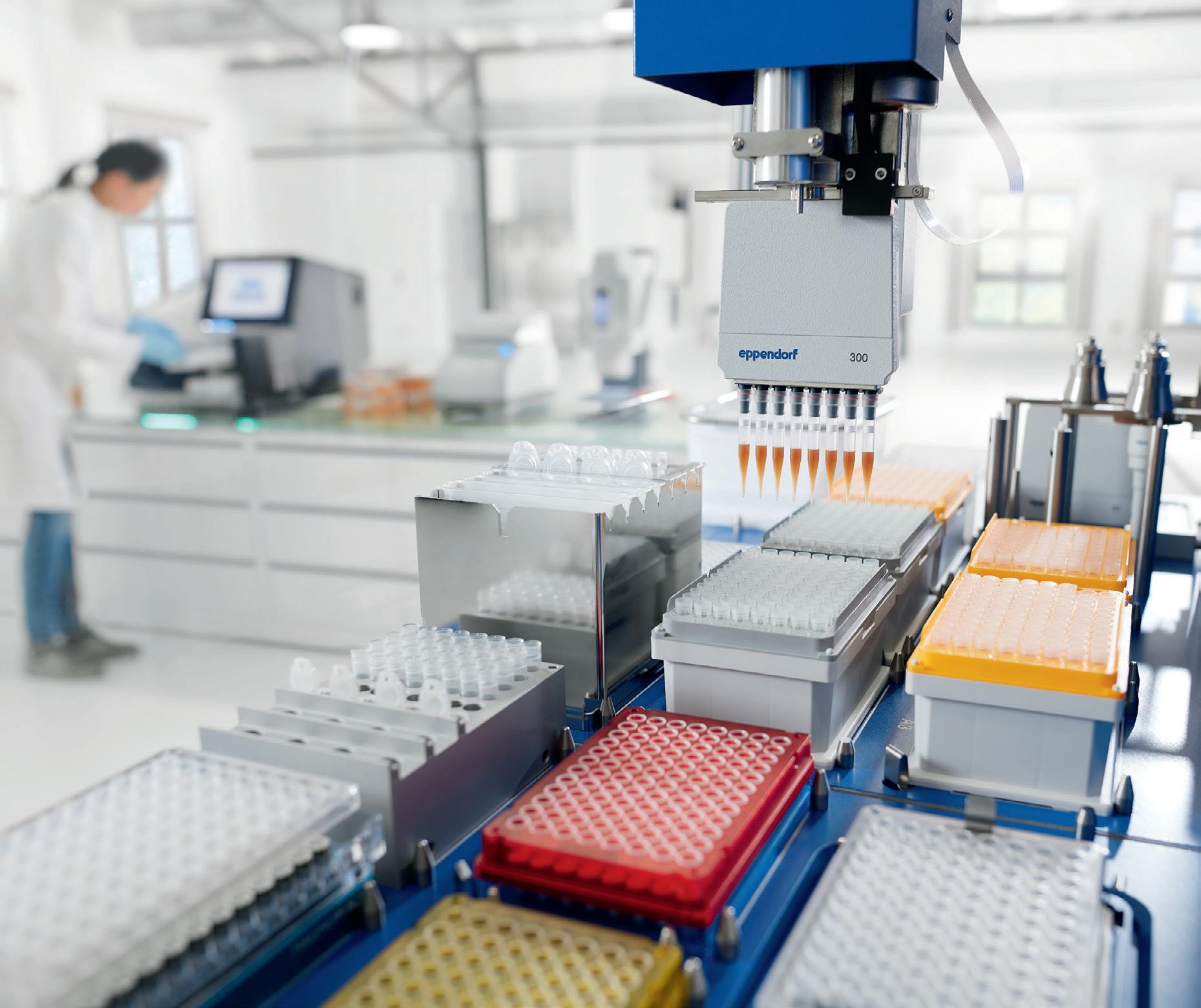
Optimise your NGS library preparation with the epMotion®
Next-generation sequencing (NGS) >sample preparation is a labour-intensive process which requires experience, precision and accuracy to generate high quality NGS libraries. > The epMotion® can automate your NGS library prep to eliminate manual pipetting errors, increase result reproducibility and your overall productivity.
Extensive list of qualified methods for high-quality NGS libraries > High pipetting accuracy from 200 nL - 1,000 μL > Integrated LEDs for visual feedback on system status > Intelligent tools and features for shorter run times

Automated computer program counts micronuclei in cells
Micronuclei, which are small, nucleus-like structures within cells, are commonly associated with tumours. Now, researchers from the University of Tsukuba have developed an automated computer program that can count these structures from microscope images of stained cells, which should increase the speed and accuracy of micronuclei research. Their work has been published in the journal Scientific Reports. Micronuclei can be stained ©agsandrew/Dollar Photo Club the same way as regular nuclei, but they are differentiated from nuclei by their much smaller size. However, identifying them is easier said than done, because automatic systems for counting micronuclei have traditionally used images taken from just a single level of tissue. Imagine cutting a cross-section through a ball that is fixed in space; if you cut a slice closer to the top or bottom areas of the ball, the size of the cross-section would be much smaller than if you chose a slice closer to the centre — so a crosssection close to the periphery of a nucleus can easily be mistaken for a micronucleus.
To combat this problem, the researchers took photos at different levels through cells or tissue and created a MATLAB-based program, named CAMDi (Calculating Automatic Micronuclei Distinction), capable of analysing the resulting three-dimensional information. In this way, they ensured that what the program counted as micronuclei were, in fact, micronuclei. They then used this program to look at micronuclei in mouse neurons and tested the effects of neuroinflammation on micronucleus numbers. “A link has been reported between inflammation and micronuclei in cancer cells,” said Dr Fuminori Tsuruta, corresponding author of the study. “We decided to test whether neuroinflammation in the brain might affect the numbers of micronuclei in neurons.”
To do this, the researchers first introduced inflammatory factors into mouse neurons grown in culture, but they found no changes in micronuclei number using their CAMDi program. However, when they gave mice injections of lipopolysaccharides, which caused inflammatory cells in the hippocampal region to become activated, there was an increase in micronuclei in the hippocampal neurons.
“These results were surprising,” Dr Tsuruta said. “They suggest that the formation of micronuclei in neurons is induced by inflammatory responses from nearby cells.”
Given that micronuclei are markers of a range of pathologies, the development of the CAMDi program could be very important for pathological diagnoses and the tracking of treatment responses. Research into micronuclei, to better understand their formation and roles in disease, should also be enhanced by the program.

Instead of mirrors, the research team created a device that works like ‘inside out’ noisecancelling headphones and which traps energy and prevents it from escaping. The trapped light energy builds up into a strong, well-shaped laser. This trick overcomes a well-known challenge of nanolasers: energy leakage.
The researchers say their device has high efficiency — only a small amount of energy was required to start the laser shining — with a threshold about 50 times lower than any previously reported nanolaser and narrow beam. Their results were published in the journal Nature Communications.
The so-called ‘nanolasers’ also have a huge variety of medical, surgical, industrial and military uses, covering everything from hair removal to laser printers and night-time surveillance. According to lead researcher Professor Yuri Kivshar, they promise to be even more powerful than existing lasers, allowing them to be useful in smaller-scale devices.
“They can also be integrated on a chip,” said Prof Kivshar, from ANU.
“For example, they can be mounted directly on the tip of an optical fibre to lighten or operate on a particular spot inside a human body.
“This technology uses laser light instead of electronics, an approach called photonics. It’s exciting to see how this can be realised in everyday practical devices, like mobile phones.”
Prof Kivshar said the new laser builds on a quantum mechanical discovery made almost 100 years ago.
“This mathematical solution was published by Wigner and von Neumann in 1929, in a paper that seemed very strange at the time — it was not explained for many years,” he said.
“Now this 100-year-old discovery is driving tomorrow’s technology.”
Powerful nanolasers ‘trap’ light energy
Researchers at The Australian National University (ANU) and Korea University have developed extremely powerful microscopic lasers that are even smaller than the wavelength of the light they produce.
The team used a clever trick to modify conventional lasers, which traditionally comprise some form of light amplification device placed between two mirrors. As the light bounces back and forth between the two mirrors, it becomes brighter and brighter.
© Stock.Adobe.com/au/ Digishooter

For Nitrogen/Protein, Fat and Fibre Testing
Made in Germany. The world leader in automatic Digestion, Distillation, Hydrolysis, Fat and Fibre Extraction.
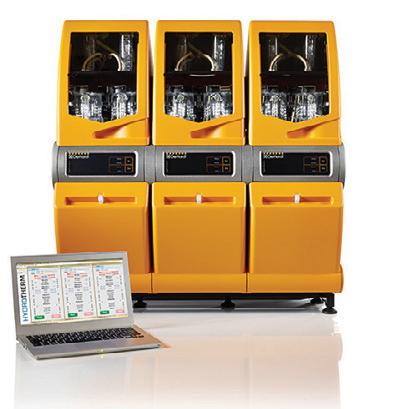
NITROGEN / PROTEIN ANALYSIS ACCORDING TO DUMAS
Combustion and analysis in as soon as 3 minutes Automated analysis of up to 156 samples Low operating costs, long service life, low maintenance costs Modern control system with monitoring functions Operates without an extraction system
BEST IN CLASS KJELDAHL DIGESTION SOLUTIONS
Process 8, 20 or 40 samples at a time, even in continuous operation Automated processes and methods Transparent and illuminated components Data export for documentation & traceability
BEST IN CLASS KJELDAHL DISTILLATION SYSTEMS
VAPODEST 200 to 500 range provides di erent levels of automation Flexible use of di erent tubes Modern control system with di erent user levels Safe, high quality, transparent design with protection functions
ADVANCED FIBRE ANALYSIS
Simultaneous processing of up to 12 samples Crude bre | ADF | ADFOM | NDF | NDFOM | aNDFOM Users have no direct contact with chemicals, improving safety in the lab Self-contained cycle; no extractor is necessary
UNRIVALED TOTAL FAT SOLUTION
Automatic hydrolysis of up to 6 samples simultaneously Processing of liquid, homogeneous, inhomogeneous, large and small samples High quality of analysis thanks to software-supported process Closed system; no contact with hot liquids and acid fumes High level of safety and reliability DUMA THERM® Pr o N
JELD A THERM® K
V APODEST®
FIBRETHERM®
HY DRO THERM®
Please contact Bio-Strategy: T 1800 008 453 | sales.au@bio-strategy.com www.bio-strategy.com
Craft beer more unique than mass-produced, study confirms
In news that is sure to make beer snobs feel vindicated, Australian researchers have discovered that craft beer is more unique when compared to mass-produced brews.
“Craft beer was strikingly different to beer from multinational breweries,” said The University of Queensland’s Associate Professor Ben Schulz.
Assoc Prof Schulz and PhD candidate Edward Kerr used a technique called mass spectrometry proteomics to identify, quantify and characterise the proteins in 23 different styles and brands of beer. Their study was completed in collaboration with The University of Melbourne and Newstead Brewing Company, and has been published in the journal Scientific Reports.
“Our initial assumption was that there would be a difference between different styles of beers, such as lagers, pale ales, IPAs and stouts, but the results proved otherwise,” Assoc Prof Schulz said.
“Surprisingly, it was only when we targeted our analysis on a single brewery to remove any variation that we found any differences between beer styles. Proteins from yeast make craft beers distinct from beers from larger breweries — which may be due to different process scales or to different styles of yeast.” Assoc Prof Schulz said proteins played an essential part in forming a beer’s sensory properties.
“Crisp, malty and bitter flavours and floral and fruity aromas are perhaps the first descriptions that come to mind when describing beer, but other sensory factors are just as important,” he said. “An attractive, stable head of foam and smooth, creamy mouth-feel are also essential, but-often-overlooked, elements of a great beer.”
The ‘beer proteome’ — or the full set of proteins in a beer — is critical in controlling these factors, and is dependent on the ingredients,

©stock.adobe.com/au/Oleksii
the yeast used for fermentation and the overall beer-making process.
The mass spectrometry techniques allowed Assoc Prof Schulz and Kerr to measure the beers’ complete set of proteins.
“Our research looked at what proteins are present and how much there is of each protein,” Kerr said. “Essentially, a mass spectrometer measures the mass of a molecule, allowing us to then match these experimentally measured masses to a theoretical list of proteins, identifying which are present and measuring the abundance of each. When we considered these features, we could clearly distinguish the profiles of different beers and different breweries.”
With only 23 beers studied, there’s more research to do, but Kerr said the findings would prove beneficial in future beer-making processes.
“We’re excited about using these techniques to understand and improve the beer-making process for non-barley gluten-free beers and with different types of yeast,” he said.
©stock.adobe.com/au/sector_2010
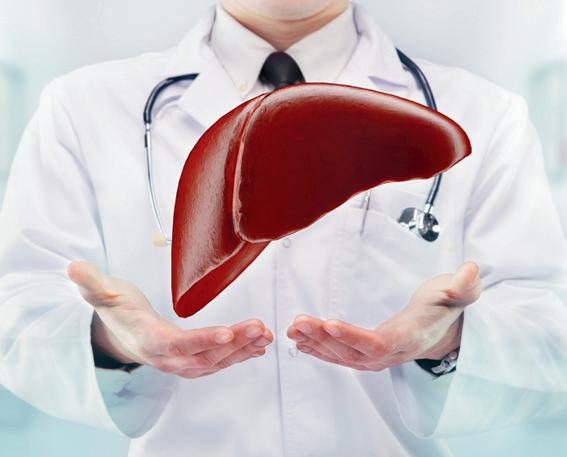
Australian researchers have discovered that liver damage caused by a life-threatening genetic blood disorder, known as hereditary haemochromatosis, can be detected with a simple blood test or scan — removing the need for an invasive and painful liver biopsy.
Haemochromatosis, a disorder marked by increased amounts of iron in the blood and liver, affects around one in 150 Australians. The condition makes them feel sick or weak or experience abdominal or joint pain. In the long run, haemochromatosis can lead to arthritis,
No more liver biopsies for haemochromatosis patients?
cirrhosis, heart disease, type 2 diabetes and certain forms of cancer, if left untreated.
Professor John Olynyk, an international expert in liver disease and hereditary haemochromatosis at Edith Cowan University, was a senior author on the paper along with Professor Martin Delatycki from the Murdoch Children’s Research Institute. Prof Olynyk said, “This work provides a simple tool to risk profile patients with haemochromatosis for those most at risk of developing liver scarring which leads to liver disease.”
The research team worked with patients who had recently been diagnosed with hereditary haemochromatosis from four hospitals around Australia to gather the information. Blood samples were taken from these newly diagnosed patients to search for common markers that would help with diagnosing future complications of the disease.
The study shows that a number of noninvasive blood tests and a special type of ultrasound, known as elastography, can detect liver scarring without the need to perform liver biopsy. The findings were published in the journal Scientific Reports and were welcomed by Dr Dianne Prince, President of Haemochromatosis Australia.
“Until now patients with a high iron count (serum ferritin more than 1000) have needed to undergo a liver biopsy to test for advanced liver fibrosis,” Dr Prince said.
“These findings have demonstrated a way to diagnose advanced liver fibrosis with a simple blood test or scan. Furthermore, results showed that patients with advanced liver fibrosis responded well to phlebotomy treatment, thus reducing the likelihood of further liver damage and potentially liver cancer.”






